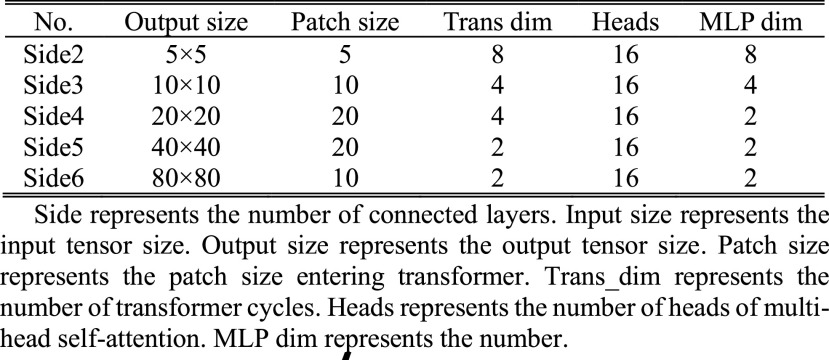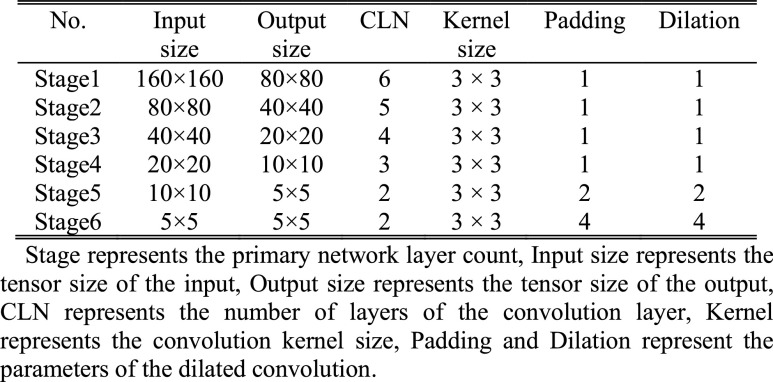TransU-Net:一种基于Transformer和U-Net的有效医学图像分割框架。
IF 3.7
3区 医学
Q2 ENGINEERING, BIOMEDICAL
IEEE Journal of Translational Engineering in Health and Medicine-Jtehm
Pub Date : 2023-06-27
DOI:10.1109/JTEHM.2023.3289990
引用次数: 0
摘要
背景:在过去的几年里,基于U-Net的U型架构和跳跃连接在医学图像分割领域取得了令人难以置信的进展。U2 Net在计算机视觉方面取得了良好的性能。然而,在医学图像分割任务中,具有过嵌套的U2-Net容易过拟合。目的:提出了一种将变压器和较轻重量的U2 Net相结合的二维网络结构TransU2 Net,用于脑肿瘤磁共振图像(MRI)的自动分割。方法:轻量级的U2 Net结构不仅可以获得多尺度信息,而且可以减少冗余特征提取。同时,嵌入堆叠卷积层中的变换器块获得了更多的全局信息;具有跳跃连接的变换器增强了空间域信息的表示。为了更好地融合高维和低维空间信息,提出了一种新的多尺度特征图融合策略作为后处理方法。结果:我们提出的模型TransU2-Net获得了更好的分割结果,在BraTS2021数据集上,我们的方法获得了88.17%的平均骰子系数;在公开的MSD数据集上进行评估,我们进行肿瘤评估,我们获得了74.69%的骰子系数;除了比较TransU2-Net的结果之外,还将其与先前提出的2D分割方法进行比较。结论:我们提出了一种将transformers和U2 Net相结合的医学图像自动分割方法,该方法具有良好的性能,具有重要的临床意义。实验结果表明,该方法优于其他二维医学图像分割方法。临床翻译声明:我们使用BarTS2021数据集和MSD数据集,它们是公开可用的数据库。本文中的所有实验都符合医学伦理。本文章由计算机程序翻译,如有差异,请以英文原文为准。



TransU²-Net: An Effective Medical Image Segmentation Framework Based on Transformer and U²-Net
Background: In the past few years, U-Net based U-shaped architecture and skip-connections have made incredible progress in the field of medical image segmentation. U
2
-Net achieves good performance in computer vision. However, in the medical image segmentation task, U
2
-Net with over nesting is easy to overfit. Purpose: A 2D network structure TransU
2
-Net combining transformer and a lighter weight U
2
-Net is proposed for automatic segmentation of brain tumor magnetic resonance image (MRI). Methods: The light-weight U
2
-Net architecture not only obtains multi-scale information but also reduces redundant feature extraction. Meanwhile, the transformer block embedded in the stacked convolutional layer obtains more global information; the transformer with skip-connection enhances spatial domain information representation. A new multi-scale feature map fusion strategy as a postprocessing method was proposed for better fusing high and low-dimensional spatial information. Results: Our proposed model TransU
2
-Net achieves better segmentation results, on the BraTS2021 dataset, our method achieves an average dice coefficient of 88.17%; Evaluation on the publicly available MSD dataset, we perform tumor evaluation, we achieve a dice coefficient of 74.69%; in addition to comparing the TransU
2
-Net results are compared with previously proposed 2D segmentation methods. Conclusions: We propose an automatic medical image segmentation method combining transformers and U
2
-Net, which has good performance and is of clinical importance. The experimental results show that the proposed method outperforms other 2D medical image segmentation methods.
Clinical Translation Statement
: We use the BarTS2021 dataset and the MSD dataset which are publicly available databases. All experiments in this paper are in accordance with medical ethics.
求助全文
通过发布文献求助,成功后即可免费获取论文全文。
去求助
来源期刊

IEEE Journal of Translational Engineering in Health and Medicine-Jtehm
Engineering-Biomedical Engineering
CiteScore
7.40
自引率
2.90%
发文量
65
审稿时长
27 weeks
期刊介绍:
The IEEE Journal of Translational Engineering in Health and Medicine is an open access product that bridges the engineering and clinical worlds, focusing on detailed descriptions of advanced technical solutions to a clinical need along with clinical results and healthcare relevance. The journal provides a platform for state-of-the-art technology directions in the interdisciplinary field of biomedical engineering, embracing engineering, life sciences and medicine. A unique aspect of the journal is its ability to foster a collaboration between physicians and engineers for presenting broad and compelling real world technological and engineering solutions that can be implemented in the interest of improving quality of patient care and treatment outcomes, thereby reducing costs and improving efficiency. The journal provides an active forum for clinical research and relevant state-of the-art technology for members of all the IEEE societies that have an interest in biomedical engineering as well as reaching out directly to physicians and the medical community through the American Medical Association (AMA) and other clinical societies. The scope of the journal includes, but is not limited, to topics on: Medical devices, healthcare delivery systems, global healthcare initiatives, and ICT based services; Technological relevance to healthcare cost reduction; Technology affecting healthcare management, decision-making, and policy; Advanced technical work that is applied to solving specific clinical needs.
 求助内容:
求助内容: 应助结果提醒方式:
应助结果提醒方式:


